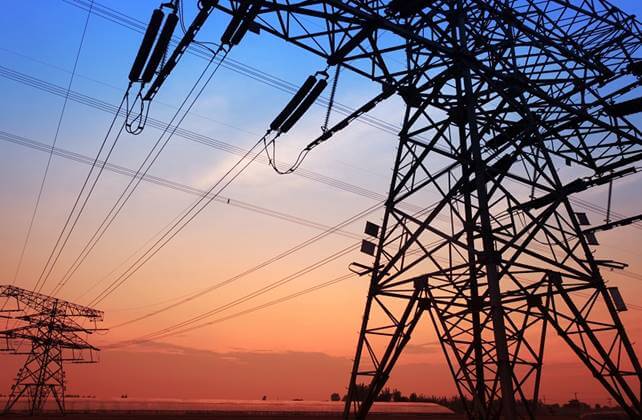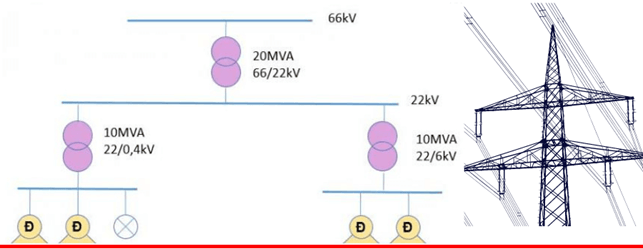What is the National Grid? In today’s article, we will learn together about the role and operating principle of the national power system, along with many other detailed information about the national power system.
What is national grid?
The national electricity grid is a huge system consisting of power plants, generators, substations, wiring systems, etc. The function of this system is to transmit electricity produced at power plants to electricity consumers nationwide.

National power system
The national electricity system is a comprehensive system is managed within a country. It includes many components such as power plants, power grids, auxiliary equipment, and electricity consumers nationwide.
+ The power plant is the place where electricity is generated. Currently, electricity in many countries is produced from many energy sources to ensure that the power source is sufficient to supply the demand for consumption throughout the country. Electricity is produced from energy sources: hydroelectricity, thermal power, solar power, wind power, and nuclear power plants.
+ Power grid is a conduction system that is connected to transmit electricity from production plants to consumers. The national grid consists of substations, high-voltage transmission lines, power distribution centers, low-voltage transmission lines, and individual lines to connect to specific areas.
+ Ancillary equipment includes equipment such as voltage converters, UPS, load reducers, load controllers, voltage regulators, measuring devices, and controlling devices for electrical systems.
+ Electricity consumers are units that use electricity to serve production and business activities and people’s daily life across the country.
Functions of the national electricity system
+ The national electricity grid provides electricity for the entire population, serving the purposes of living, production and business. Electricity is an important source of energy. Electricity makes production equipment and machines work to create products and goods for people. The demand for power consumption at each time will be different; the power system will ensure stable power. Therefore, the national power ensures the development of a country that may be stable, growing or not.
+ The national power ensures national security and safety. Electricity is an important energy source to operate signals, radio, information transmission equipment, satellites, etc. Helps operate defense systems at sea, border, and air force.
+ The national power is also a driving force for economic development and the improvement of people’s quality of life. A stable electricity system will be the foundation for the country’s growth, attracting foreign investment and improving people’s quality of life.
How does it work?
The electricity produced at a power plant with low voltage is only tens of kv. Then one has to raise the voltage to hundreds of kv using transformers. When electricity is transmitted to the consumer, a transformer is used to reduce the voltage depending on the demand.
This method aims to reduce power consumption during power transmission. According to Ohm’s law P = I²*R, the conductor here acts as a resistor; even it is made of a good conductive material, a long conductor will also consume a huge amount of electricity. One can reduce power consumption by increasing the quality of the conductor, but this will increase the cost. Therefore, voltage increases to a high level are necessary to limit power consumption during transmission.

What is national grid – how it work
When we use electric energy, we will have to pay a fee corresponding to the monthly electricity consumption. The amount of power consumed at each time will be different. In general, the peak hours for electricity use are in the afternoon and evening when people come home from work and school and they start cooking, watching TV, etc.
Voltage levels of the national grid
Currently, in many developed countries around the world, the national power is divided into several levels, with different voltage levels: 60 – 150 – 330 – 400 – 750kV. Usually, when the voltage is higher, the current value will be small, reducing the loss in the transmission process. Power grid level below 1000v ensures safety, so some countries still use this voltage level.

Voltage levels of the national electricity system
A revolution is taking place in the energy industry. Change is happening at an unprecedented rate, creating both opportunities for the industry and challenges that will affect how the National Power operates.
Meeting the challenges of a growing population, as well as carbon reduction goals, requires smart solutions. The National Grid is investing in more innovative, diverse and flexible power generation technologies.
Related Posts
What are substations? Things to know about substations!
How do solar cells produce electricity
Check out an interesting video by National Grid UK